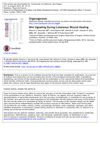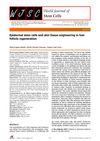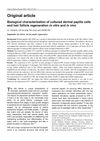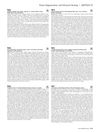TLDR Deer antler stem cell fluid helps regenerate tissue better than fat-derived stem cell fluid.
In the 2018 study, researchers found that conditioned media from deer antlerogenic mesenchymal stem cells (DaMSC-CM) could promote tissue regeneration, including hair regeneration, more effectively than media from adipose tissue-derived stem cells. The DaMSC-CM contained novel round vesicles, approximately 120 nm in diameter, which could regulate gene expression related to tissue renewal, such as Wnt-3a, Wnt-10b, and LEF-1. These findings suggest that DaMSC-CM and its secretory vesicles could have therapeutic applications for tissue regeneration. The study focused on cellular and molecular mechanisms and did not involve human subjects.
 45 citations
,
April 2016 in “Journal of Dermatological Science”
45 citations
,
April 2016 in “Journal of Dermatological Science” The Wnt/β-catenin pathway can activate melanocyte stem cells and may help regenerate hair follicles.
 66 citations
,
July 2015 in “Organogenesis”
66 citations
,
July 2015 in “Organogenesis” Wnt signaling is crucial for skin wound healing and reducing scars.
 83 citations
,
January 2015 in “World Journal of Stem Cells”
83 citations
,
January 2015 in “World Journal of Stem Cells” Hair follicle regeneration needs special conditions and young cells.
60 citations
,
January 2015 in “World Journal of Stem Cells” Stem cells and biomaterials are key to improving skin substitutes for medical use.
 35 citations
,
January 2014 in “Journal of Tissue Engineering”
35 citations
,
January 2014 in “Journal of Tissue Engineering” Cell-based therapies using dermal papilla cells and adipocyte lineage cells show potential for hair regeneration.
 232 citations
,
June 2012 in “Cold Spring Harbor Perspectives in Biology”
232 citations
,
June 2012 in “Cold Spring Harbor Perspectives in Biology” Wnt signaling helps heal injuries and could lead to new treatments.
 24 citations
,
February 2006 in “Chinese Medical Journal”
24 citations
,
February 2006 in “Chinese Medical Journal” Cultured dermal papilla cells can regenerate hair follicles and sustain hair growth.
 April 2019 in “Journal of Investigative Dermatology”
April 2019 in “Journal of Investigative Dermatology” Wnt-signaling is regulated differently in skin cells and immune responses during wound healing.
 17 citations
,
December 2010 in “Journal of Investigative Dermatology”
17 citations
,
December 2010 in “Journal of Investigative Dermatology” Flightless I protein affects hair growth, with low levels delaying it and high levels increasing hair length in rodents.








